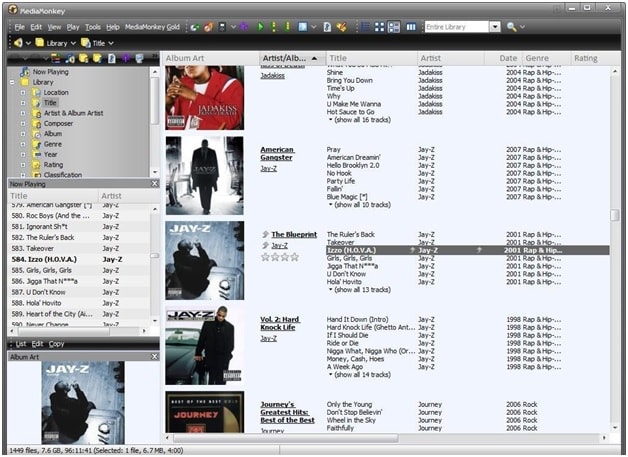A tool developed by hackers that is used to perform malicious attacks on computer systems. They are usually scripts that are designed to exploit weaknesses in software over a network, most commonly the Internet. Zero-Day is a common type of exploit.
Zero-Day Exploits
Called either Day Zero or Zero-Day, it is an exploit that takes advantage of a security vulnerability on the same day that the vulnerability becomes publicly or generally known. Zero-Day exploits are usually posted by well-known hacker groups. Software companies may issue a security bulletin or advisory when the exploit becomes known, but companies may not be able to offer a patch to fix the vulnerability for some time after.
Powered by Create your own unique website with customizable templates. HOW to CHEAT in ROBLOX 2019! (UPDATED) new videoif you want a more simplified in depth review: https://v3rmillion.net/showthrea. Download xSQL Script Executor for Windows to execute multiple T-SQL scripts against multiple SQL Server, DB2, and MySQL databases. Used to run script on page to get results. The extension helps run java script on the page. The good point is that the extension is powered by jQuery version 1.10 which helps in debugging any html page you have currently opened up in the browser. Prison Life OP GUI with this script you can kill all, Kill Aura and other OP commands in Prison Life, make other players mad and have fun:D to execute this script recommended to use Paid Exploit example: Synapse X, SirHurt, etc.
An exploit (from the same word in the French language, meaning “achievement”, or “accomplishment”) is a piece of software, a chunk of data, or sequence of commands that takes advantage of a bug, glitch or vulnerability in order to cause unintended or unanticipated behavior to occur on computer software, hardware, or something electronic (usually computerised). This frequently includes such things as gaining control of a computer system or allowing privilege escalation or a denial of service attack.
There are several methods of classifying exploits. The most common is by how the exploit contacts the vulnerable software. A ‘remote exploit’ works over a network and exploits the security vulnerability without any prior access to the vulnerable system. A ‘local exploit’ requires prior access to the vulnerable system and usually increases the privileges of the person running the exploit past those granted by the system administrator. Exploits against client applications also exist, usually consisting of modified servers that send an exploit if accessed with client application. Exploits against client applications may also require some interaction with the user and thus may be used in combination with social engineering method. This is the hacker way of getting into computers and websites for stealing data.
In computing, an exploit is an attack on a computer system, especially one that takes advantage of a particular vulnerability that the system offers to intruders. Used as a verb, the term refers to the act of successfully making such an attack.
In Exploit another classification is by the action against vulnerable system: unauthorised data access, arbitrary code execution, denial of service.
Script Exploiter Roblox
Many crackers (or hackers, if you prefer that term) take pride in keeping tabs of such exploits and post their exploits (and discovered vulnerabilities) on a Web site to share with others.

Where an exploit takes advantage of a weakness in an operating system or vendor application program, the owners of the system or application issue a “fix” or patch in response. Users of the system or application are responsible for obtaining the patch, which can usually be downloaded from the Web. Failure to install a patch for a given problem exposes the user to a security breach. (However, it can be difficult to keep up with all the required patches.)
Many exploits are designed to provide superuser-level access to a computer system. However, it is also possible to use several exploits, first to gain low-level access, then to escalate privileges repeatedly until one reaches root.
Normally a single exploit can only take advantage of a specific software vulnerability. Often, when an exploit is published, the vulnerability is fixed through a patch and the exploit becomes obsolete for newer versions of the software. This is the reason why some blackhat hackers do not publish their exploits but keep them private to themselves or other crackers. Such exploits are referred to as ‘zero-day exploits’ and to obtain access to such exploits is the primary desire of unskilled attackers, often nicknamed script kiddies.
Script Kiddie
A person, normally someone who is not technologically sophisticated, who randomly seeks out a specific weakness over the Internet in order to gain root access to a system without really understanding what it is s/he is exploiting because the weakness was discovered by someone else. A script kiddie is not looking to target specific information or a specific company but rather uses knowledge of a vulnerability to scan the entire Internet for a victim that possesses that vulnerability.
Cut man stage my site website. The vast majority of the “hacker” underground is made up of people who have only been using computers for a few years and who really know comparatively little about them. These are people, usually kids, who are attracted by the seemingly magical powers that hacking gives them. Since they know so little about computers, they don’t really known how to hack themselves but instead follow recipes or “scripts” developed by real hackers. Most of these scripts are easy-to-use programs whereby the “script-kiddy” simply enters the IP address of the victim.
One of the distinguishing features of script-kiddies is that they must have a lot of patience. Because security holes are quickly found and repaired, most systems will resist most attacks. Therefore, if the script-kiddy is targeting a single system, they have to find a lot of scripts to try against the system before they find one that works. More commonly, the script-kiddies downloads one of the most recently developed scripts and proceeds to run it against targets all throughout the Internet until they find someone who is vulnerable to that specific script.
At Rapid7, we often get asked what the top 10 Metasploit modules are. This is a hard question to answer: What does 'top' mean anyway? Is it a personal opinion, or what is being used in the industry? Because many Metasploit users work in highly sensitive environments, and because we respect our users' privacy, the product doesn't report any usage reports back to us.
We may have found a way to answer your questions: We looked at our metasploit.com web server stats, specifically the Metasploit Auxiliary and Exploit Database, which exploit and module pages were researched the most. Here they are, annotated with Tod Beardley's excellent comments:
Exploiter For Roblox
- MS12-020 Microsoft Remote Desktop Use-After-Free DoS (CVE-2012-0002, MSB-MS12-020):This is the 2012 RDP Bug, where it was implied -- but never proven in public -- that a pre-auth bug in RDP can allow for remote code execution. This is likely the most popular module we have due to both recency bias and because there was an unusual level of spontaneous organization of the Metasploit developer community to search for the correct path to remote code execution. So far, nobody's gotten RCE yet (in public), but the Metasploit module provides the most clues.
- Microsoft Server Service Relative Path Stack Corruption (CVE-2008-4250, MSB-MS08-067): A four year old vulnerability that tends to give the most reliable shells on Windows 2003 Server and Windows XP. It's also got a great pile of language pack targets. All of Metasploit's exploits provide US English targeted shellcode, a few might provide Chinese, Spanish, French, or other popular languages; this one has targets in pretty much every language you've ever heard of. This exploit is also not ancient, so it's reasonable to expect to find some unpatched systems in a medium to large enterprise vulnerable to it.
- Microsoft Server Service NetpwPathCanonicalize Overflow (CVE-2006-3439, MSB-MS06-040): A six year old vulnerability that's notable in that there's no official patch from Microsoft for this on Windows NT 4.0. This was discovered after NT went end-of-life, so if you need remote root on an NT machine (and there are still plenty out there), this is going to be your first choice.
- Microsoft RPC DCOM Interface Overflow (CVE-2003-0352, MSB-MS03-026): A nine year old vulnerability that used to be the de-facto standard exploit for Windows machines -- this is the RPC DCom bug, and it affects ancient NT machines. It was most notable in that it was used by the Blaster and Nachi worms to transit networks. It's now pretty much a case study in stack buffer overflows in Windows, so it's got a lot of historical value. If memory serves, this was the most reliable exploit in Metasploit v2.
- Microsoft Windows 7 / Server 2008 R2 SMB Client Infinite Loop (CVE-2010-0017, MSB-MS10-006): Not sure why this module is popular -- it's a client side DoS. Historically, it's a neat DoS, since it demos a bug in Windows 7's kernel, but all the module does is crash Windows 7 clients after you get a user to connect to you.
- Adobe PDF Embedded EXE Social Engineering (CVE-2010-1240): This module exploits CVE-2010-1240 in Adobe Reader. The idea is that you can embed and execute a Meterpreter PE Executable in a PDF, and when the user opens the PDF, surprise shells! Since it's on this list, it's probably the most popular social engineering-style module.
- Apache mod_isapi <= 2.2.14 Dangling Pointer (CVE-2010-0425): Although this is an exploit in Apache, don't be fooled! It's only exploitable on Windows (so that knocks out the biggest chunk of Apache installs at the time of this module's release), and it's only a DoS. Again, kind of a mystery as to why it's so popular.
- Java AtomicReferenceArray Type Violation Vulnerability (CVE-2012-0507): This was initially discovered in the wild as a Java 0-day, and this module represented the fevered work of sinn3r and Juan Vazquez, who turned out the first reliable public cross-platform exploit for the bug. The blog post 'CVE-2012-0507 - Java Strikes Again' shows a screenshot of Meterpreter sessions on Windows, Ubuntu, and OSX systems. In fact, this may be the first publicly demonstrable Java exploit that Just Works against all three platforms for the vulnerable versions of Java -- no extra configuration or fingerprinting is needed.
- Microsoft Windows Authenticated User Code Execution (CVE-1999-0504): The PSExec module is a utility module -- given an SMB username and password with sufficient privileges on the target machine, the user can get a shell. It's not sexy, but it's super handy for testing payloads and setup. Even though it's a lowly #9, I'd bet it's the most-used module in classroom and test environments.
- Microsoft Plug and Play Service Overflow (CVE-2005-1983, MSB-MS05-039): This exploits the Plug and Play service on Windows 2000. This is the exploit that MS06-040 replaced, though until MS06-040, this was the most reliable exploit around for Windows 2000. The Zotob worm used it. Note that while the exploit isn't 100% reliable, failed attempts had a tendency to trigger a reboot of the target, so the next attempt would be 100% successful. In other words, for some people, the reboot-on-failure is really more of a feature than a bug.
Roblox Exploiter Download
Let us know if you find this ranking interesting so we can continue sharing it in the future. We're excited to see how this list will look next month, and what the major changes will be!
Free Script Exploiter
If you want to use any of these exploits right now, you can download Metasploit for free!

